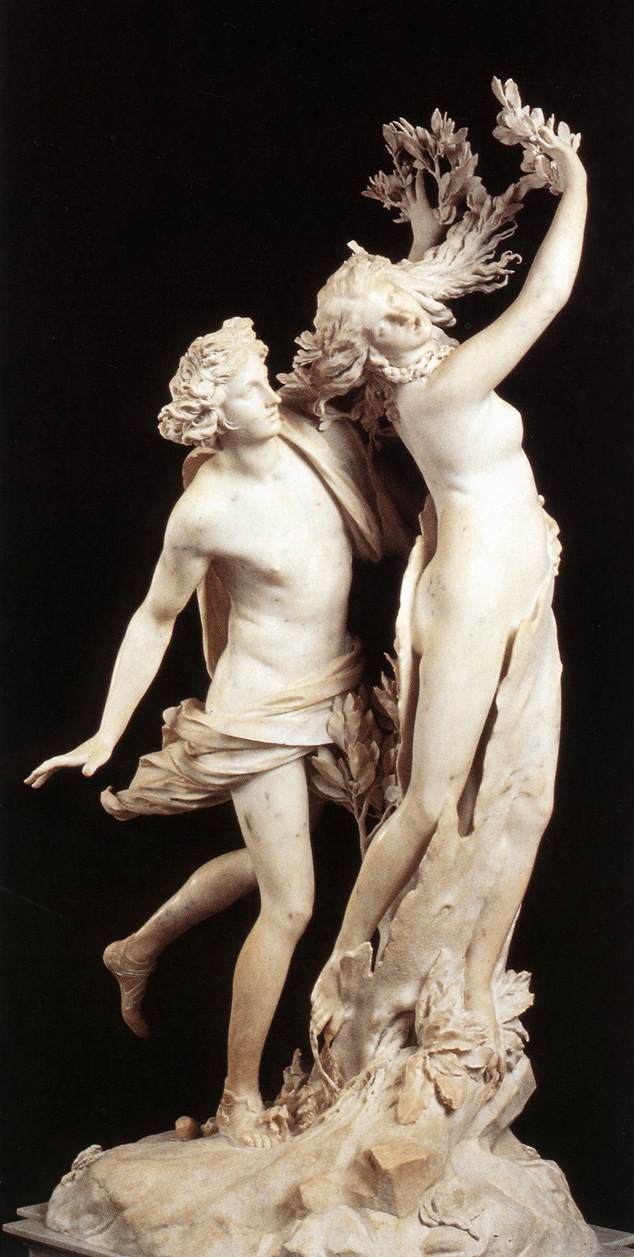
Gian Lorenzo Bernini, “Apollo and Daphne,” 1625, Marble. Commissioned by Cardinal Scipione Borghese. Galleria Borghese, Rome, Italy. Image Credit: Kenny Mencher
This sculpture was commissioned by Cardinal Borghese of the Catholic Church and is still located in the Galleria Borghese—the room for which it was commissioned—in Rome, Italy. Like The Rape of Proserpina, Apollo and Daphne depicts a mythological scene outside of Christian tradition. This statue portrays the futile romance between Apollo and Daphne; Apollo is deeply in love with Daphne, a woman who abhors Apollo’s advances. As soon as Apollo is able to lay his hand on Daphne, she turns into a tree.
Bernini portrays this moment at the height of the action; Apollo has just touched Daphne’s torso, and she is transforming into a tree. This snapshot is able to tell the entire story. The look of longing on Apollo’s face is still apparent, both of them appear to still be moving, as if in mid-chase, and the transformative depiction of Daphne signals the tragic end of the tale. This dynamic representation of a moment, which elucidates an entire story, is a technique masterfully utilized throughout the Baroque.7

“Apollo and Daphne” (rear view). Image Credit: Justin Wisniewski
The serpentine contortions of Apollo and Daphne’s bodies serve to further express the movement in the sculpture, while also leading the viewer around the sculpture to view the scene from every angle. This common Baroque trait gets the viewer involved in the experience and forces them to examine the story from multiple angles; the viewer becomes a part of the dynamism inherent in the sculpture. The viewer may see the look of longing on Apollo’s face and feel for the man who has lost his love. On the other hand, the viewer could move further around the piece and see the look of surprise and anguish on Daphne’s face that indicates this tale is not one of lost love, but rather unwanted advances and unfortunate consequences.

“Apollo and Daphne” (detail). Image Credit: Kenny Mencher
Apollo and Daphne is also another example of a sensual moment in Bernini’s work. We see the longing in Apollo’s eyes and the look of shock on Daphne’s face, but the very touch of Apollo’s hand on Daphne’s now-bark flesh tells the story. This touch reveals the futility of Apollo’s desire, as well as the violence with which he pursued Daphne.
Again, even though it is not strictly a Christian message, this sculpture still carries with it the cultural influence of the Counter-Reformation. The sensuality of the piece and the dynamic portrayal of the characters serve to enrapture the viewer and emphasize bodily experiences as a method of expression.
Learn more here: http://www.galleriaborghese.it/